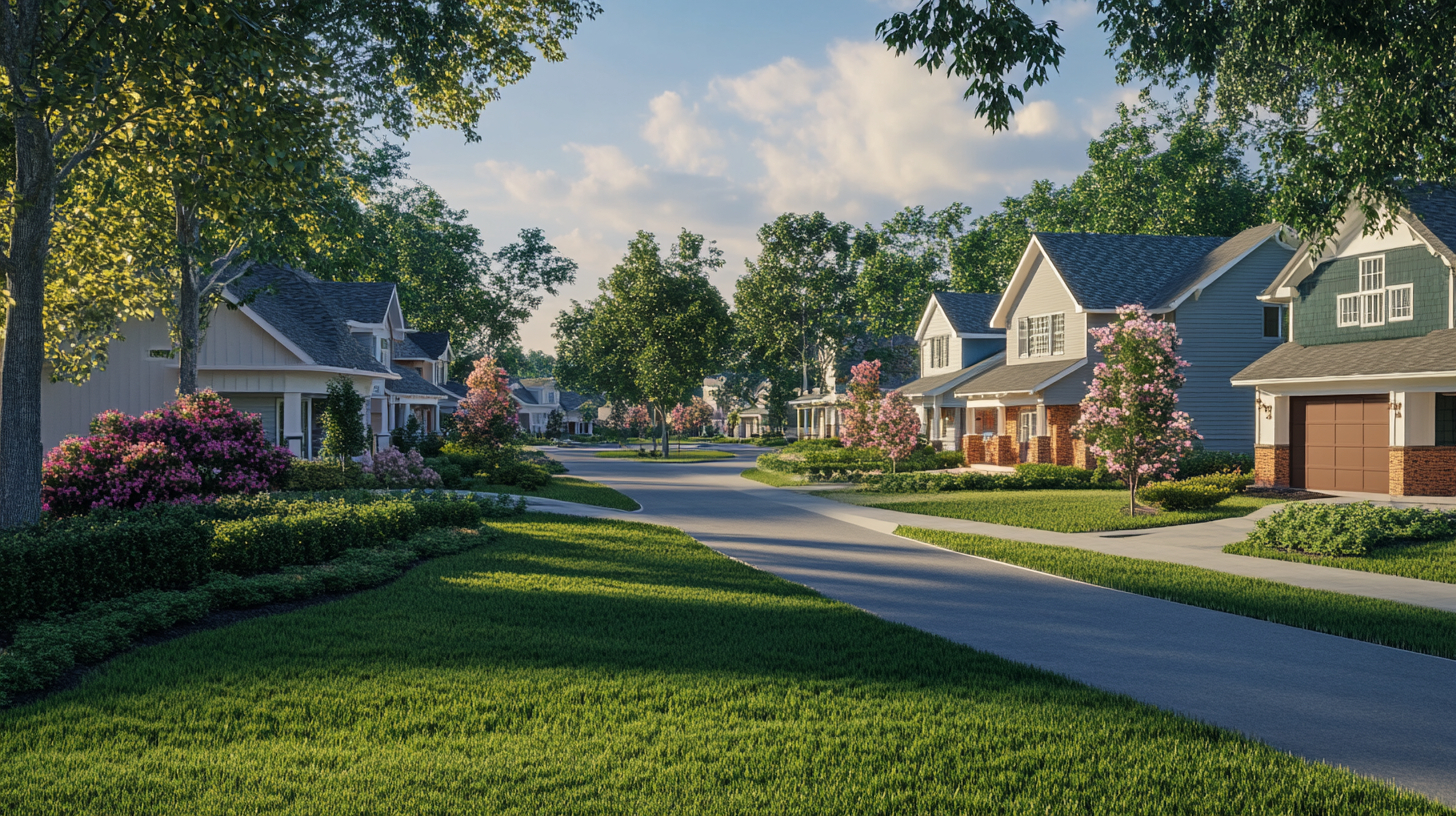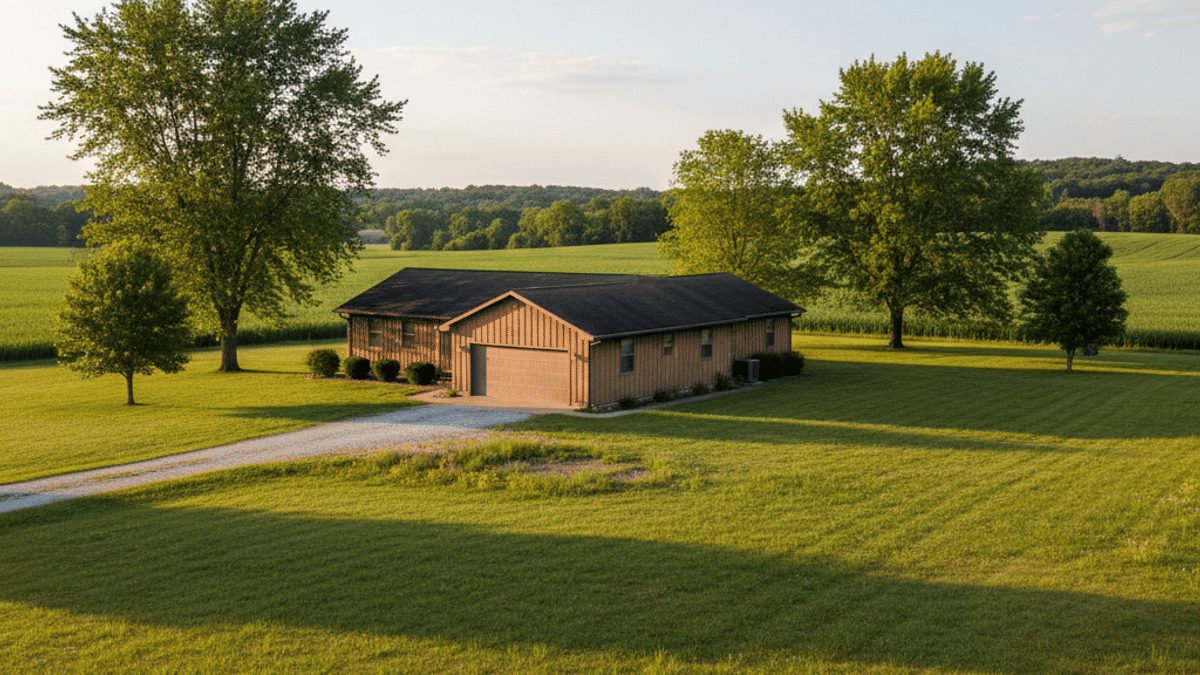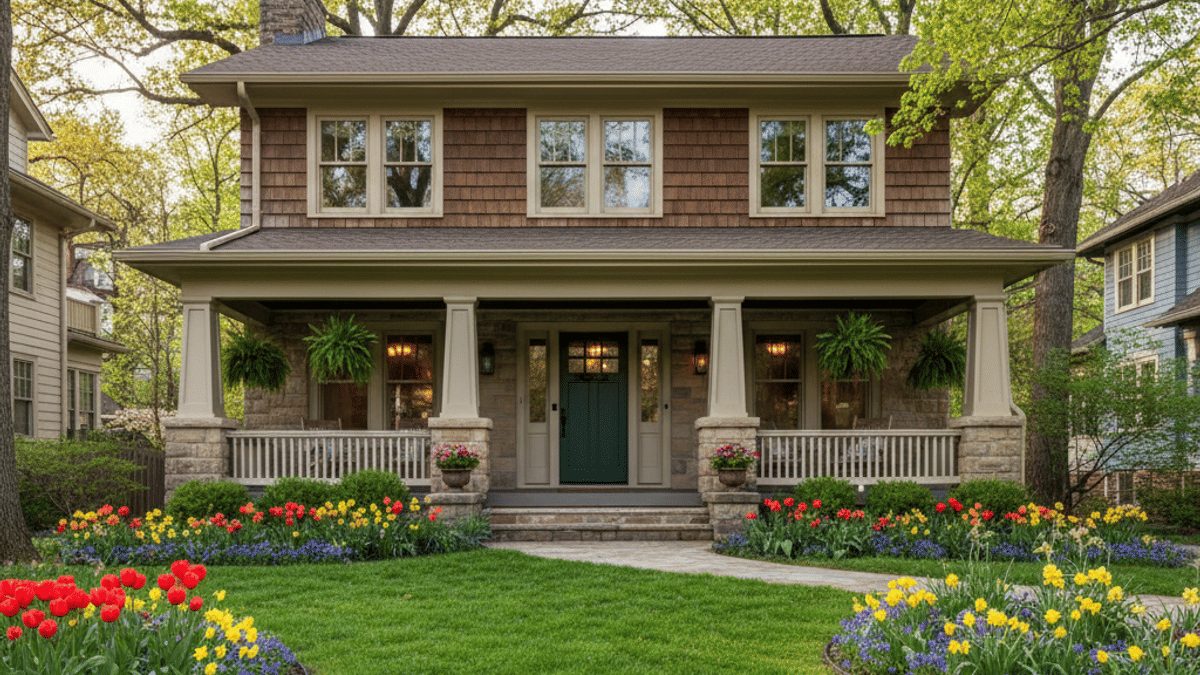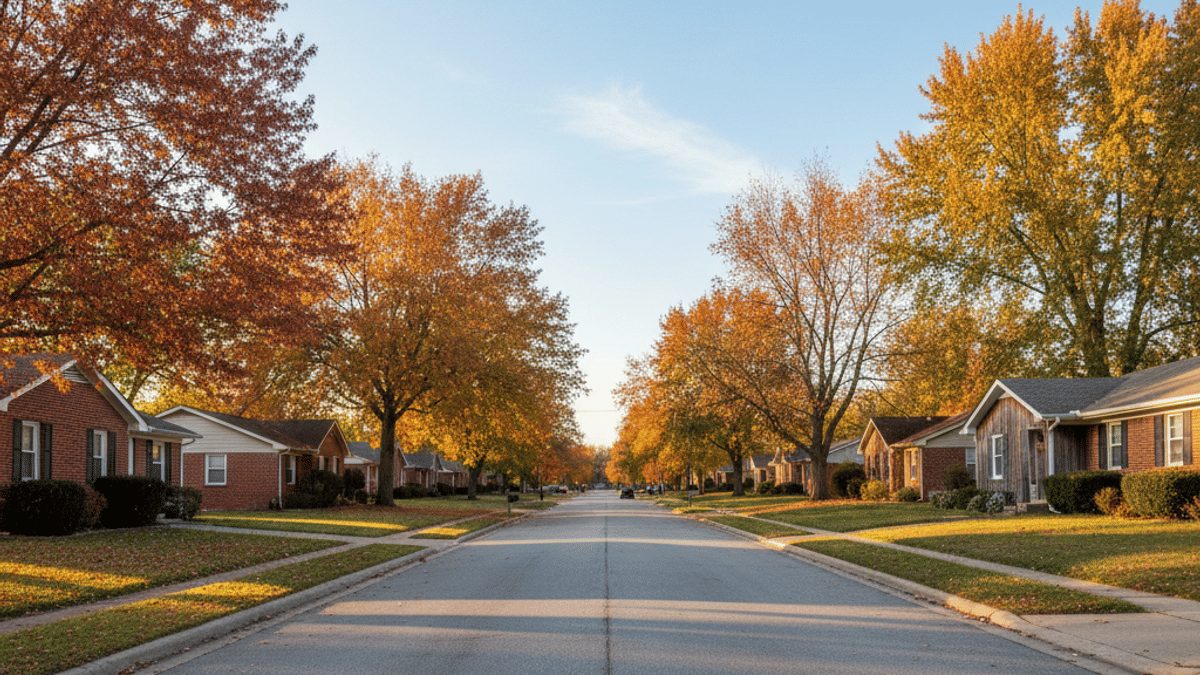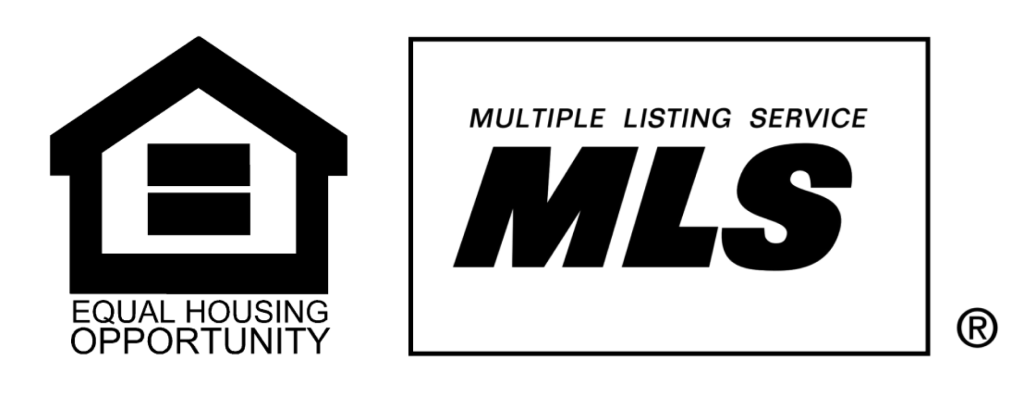Hallsville Right Now: A Quick Pulse Check
Before we talk timelines, you need context. Hallsville sits in Boone County, population a hair under two thousand and ticking upward a few percentage points each Census cycle. The setting feels rural at first glance, but Columbia’s job market has been pushing new faces our way. Commuters like the easy drive and the fact that median home prices hover about fifteen to twenty percent below Columbia’s number.
Recent listing data shows the typical Hallsville single-family home landing around two hundred sixty thousand dollars. One year ago that same basket of homes averaged roughly two hundred thirty. Twelve percent appreciation in twelve months is not normal long term, yet it tells you demand has momentum.
Homes spend twenty to thirty days on market, shorter than the Missouri average. That speed shows buyers are watching this ZIP code. And because inventory stays tight—often under two months of supply—sellers hold more cards than buyers in most price bands.
Keep those stats in mind as we explore how long you should stick around.
The Usual Rule of Thumb… And Why Hallsville Bends It
Most national advisers chant the five-year rule. Own at least half a decade so you offset closing costs, Realtor commissions, moving expenses, and the early years of mortgage interest when you barely dent principal.
Good advice in a vacuum, yet Hallsville is not a vacuum.
- Mortgage rates in the threes two years ago produced a wave of sub-four-percent mortgages throughout Boone County. Owners with rates that low gain equity faster because more of the payment slides toward principal.
- Hallsville property taxes average just under one percent of assessed value. Lower carrying costs let equity snowball quicker than, say, coastal markets where taxes chew bigger bites.
- Listing inventory rarely climbs high enough to push prices down for long, which shortens the time it takes to exit with a profit.
Put those pieces together and you get homeowners breaking even closer to the three-year mark instead of five. Break even means covering what you spent to buy, what you will pay to sell, and what you handed the bank in interest along the way. Three years is the first checkpoint. Five still offers more financial cushion, yet staying that long is no longer mandatory for everyone.
Equity: The Magic Word Nobody Should Ignore
Let us talk numbers because numbers calm nerves.
Pretend you bought at two hundred forty thousand with five percent down. Your first-year amortization schedule shows you pay off roughly four thousand in principal. By year three, principal paid totals about thirteen thousand. Sprinkle on the twelve percent value bump Hallsville enjoyed last year and you might find forty thousand in straight appreciation, maybe fifty if your lot backs to pasture.
Equity equals down payment plus principal paid plus appreciation, so in that scenario you are sitting on:
- Twelve thousand original down payment
- Thirteen thousand principal
- Forty-plus thousand appreciation
Sixty-five grand of equity after roughly thirty-six mortgage payments. Even after you slice away six percent for commissions and another two percent for closing costs, you could still pocket high forties. That kind of math convinces many Hallsville owners to list earlier than folks in slower-growing regions.
Do the math with your own figures. You will know fast whether three years feels too soon or right on time.
Capital Gains Tax: The Two-Year Cliff
Some people forget the IRS has a rule that matters way more than any real estate guru. Live in your primary home at least two of the last five years and you can exclude up to two hundred fifty thousand of profit if single, five hundred thousand if married filing jointly.
Sell before two years and those gains turn taxable. Suddenly the equity chart above looks skinnier. So while I just praised a three-year horizon, remember that the bare minimum is really twenty-four months if you want to dodge capital gains. Think of two years as the no-fly zone, three years as the first comfortable runway, five years as the old-school safest bet.
When Holding Longer Makes You Richer
Even though Hallsville owners often see healthy appreciation early, there are still perks to riding the wave longer.
- Compounding upgrades
You repaint, replace carpet, maybe add a small deck. Ten thousand invested smartly can add fifteen or twenty to resale if you choose projects buyers crave. - Mortgage balance shrinks quicker later
Mortgage amortization tilts faster toward principal every year you hold. By year five you are chopping principal at twice the pace of year one. - Less transaction drag
Closing costs and commissions remain flat percentages. The longer you keep the home, the smaller those fees feel relative to total equity. - Community dividends
Hallsville rewards loyalty. Stay five years and you probably know city hall staff by first name, land volunteer roles, and build babysitter networks. The intangible value of belonging shows up when you eventually list. Buyers read the neighborhood-lover vibe and pay for it.
But Life Happens: Reasons You Might Bail Early
You can plan to stay five years and still slam into a curveball that changes everything.
- Job transfer
Columbia biotech expands, Jefferson City state gig calls, maybe Kansas City throws in a six-figure offer. Commutes longer than an audiobook get old, so people move. - Family crunch
Divorce, marriage, blended households, surprise twins—space needs shift fast. Hallsville three-bedroom to Hallsville five-bedroom? Sure, but sometimes the right upgrade sits outside the district. - Rate roulette
If you hit a sub-three-percent refi and now rates flirt with seven, hanging onto that loan and converting the place to a rental could beat selling. Other times rates drop again and buyers flood the market, making an early sale irresistible. Interest swings guide timing more than many admit. - Local signals
Hallsville school bond issues, new factories along Route B, or a bypass rumor can move property values. Watch city council agendas and Boone County planning notes. If you smell a spike or a slump before the herd, you time your exit better.
Twelve Questions To Set Your Personal Timeline
Grab a pen, no calculator needed yet. Answer yes or no down the page.
- Have you lived in the house at least twenty-four months?
- Will capital gains stay under the IRS exclusion?
- Could you rent the property for at least one hundred fifty percent of the monthly mortgage payment?
- Has your loan balance fallen below eighty percent of today’s value, granting you instant equity on sale?
- Do you have at least three nearby comparables that closed within the last ninety days?
- Is inventory in Hallsville below three months?
- Are interest rates lower than your current mortgage rate by more than one percent?
- Do you have a life event pushing you to relocate within six months?
- Are you itching to remodel something bigger than cosmetic updates?
- Has your employer hinted at restructuring or relocation?
- Did your family size change since move-in?
- Do you already know where you would go next?
Count your yes responses.
- Zero to four: No hurry, let equity mature.
- Five to eight: You are in the sweet spot where listing could pay off, but crunch numbers.
- Nine to twelve: Momentum says sell or convert to rental, just mind that two-year tax rule.
Market Data Points You Cannot Ignore
Hallsville numbers move, so peek at the latest each quarter.
- Median sale price
Twenty-four months ago: about two hundred ten thousand
Today: about two hundred sixty thousand - Average list-to-sale ratio
Ninety-eight to one hundred percent. Translation: sellers get nearly full ask. - Days on market
Early 2021: sixty plus
Right now: under thirty - Months of inventory
Balanced market equals six months. Hallsville sits near two. Seller advantage until that crosses four. - Property tax rate
Roughly zero point eight eight percent of assessed value, slightly below state average. - School district rating
Hallsville R-IV scores in the mid-nineties on state performance indexes, a magnet for family buyers.
The Renegade Move: Keep the House, Sell Later
Maybe your answers stacked toward selling, yet something still holds you back. Consider turning your Hallsville home into a rental for a year or two.
Why it can work:
- Columbia’s student population often spills outward, hunting cheaper rents.
- Your low fixed rate stays intact, tenants cover carrying costs, equity keeps climbing.
- You avoid the knee-jerk sale when a temporary life change forced you out of town.
Just remember the landlord learning curve: tenant screening, insurance changes, city inspections. If that sounds like nails on a chalkboard, skip it. If you are game, it can buy time and profit.
So, How Long Should You Own Before Selling in Hallsville?
Here is the cheat sheet boiled down to one sentence:
Stay at least two years for tax reasons, check equity at year three, reassess annually until either life or market pressure shouts loud enough to list.
Hallsville’s steady demand and modest tax bite let homeowners break even faster than most places. Three years often works. Five years offers a bigger safety net. Past five, you are betting continued appreciation beats other opportunities for your cash.
No crystal ball hides in this article. You hold the real calculator. Plug in your numbers. Chat with a local agent who knows which streets fetch the strongest price per square foot. Peek at city planning notes for clues about future growth corridors. Then decide.
Ready to Crunch Real Numbers?
Your next step is simple. Gather:
- Current mortgage payoff statement
- Recent comparable sales from your agent
- Estimate of closing costs and commissions
- A list of repairs you would tackle before showing
Add the first two, subtract the last two. Positive result means profit; negative means wait or rent. If the answer still feels fuzzy, reach out. A five-minute conversation with someone who closes Hallsville deals every week can shave months off indecision.
You deserve clarity. You deserve maximum equity. And you deserve to make that call on your own timeline.

